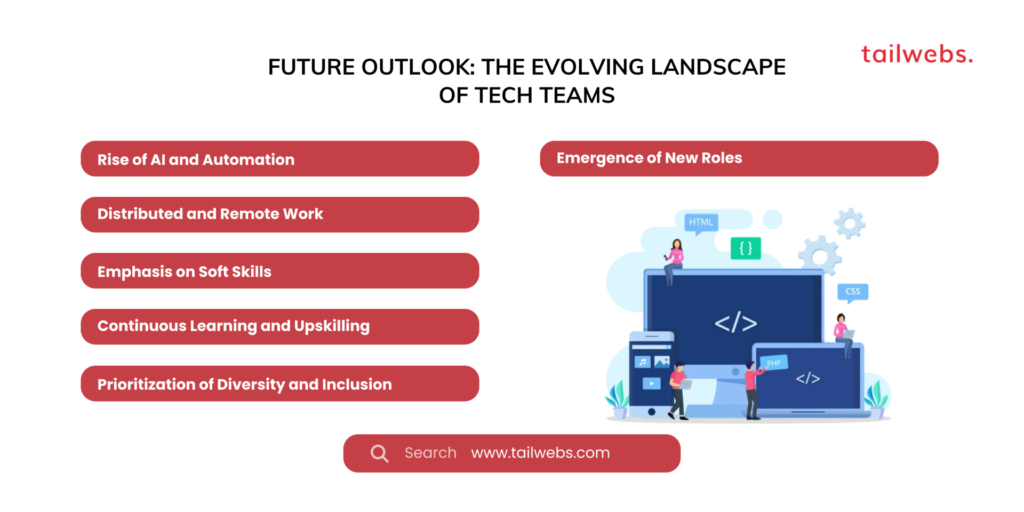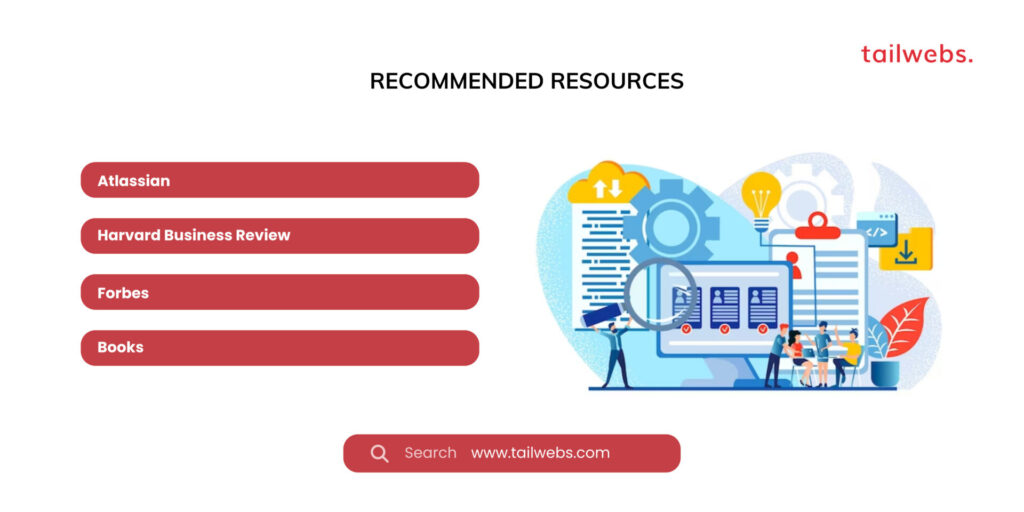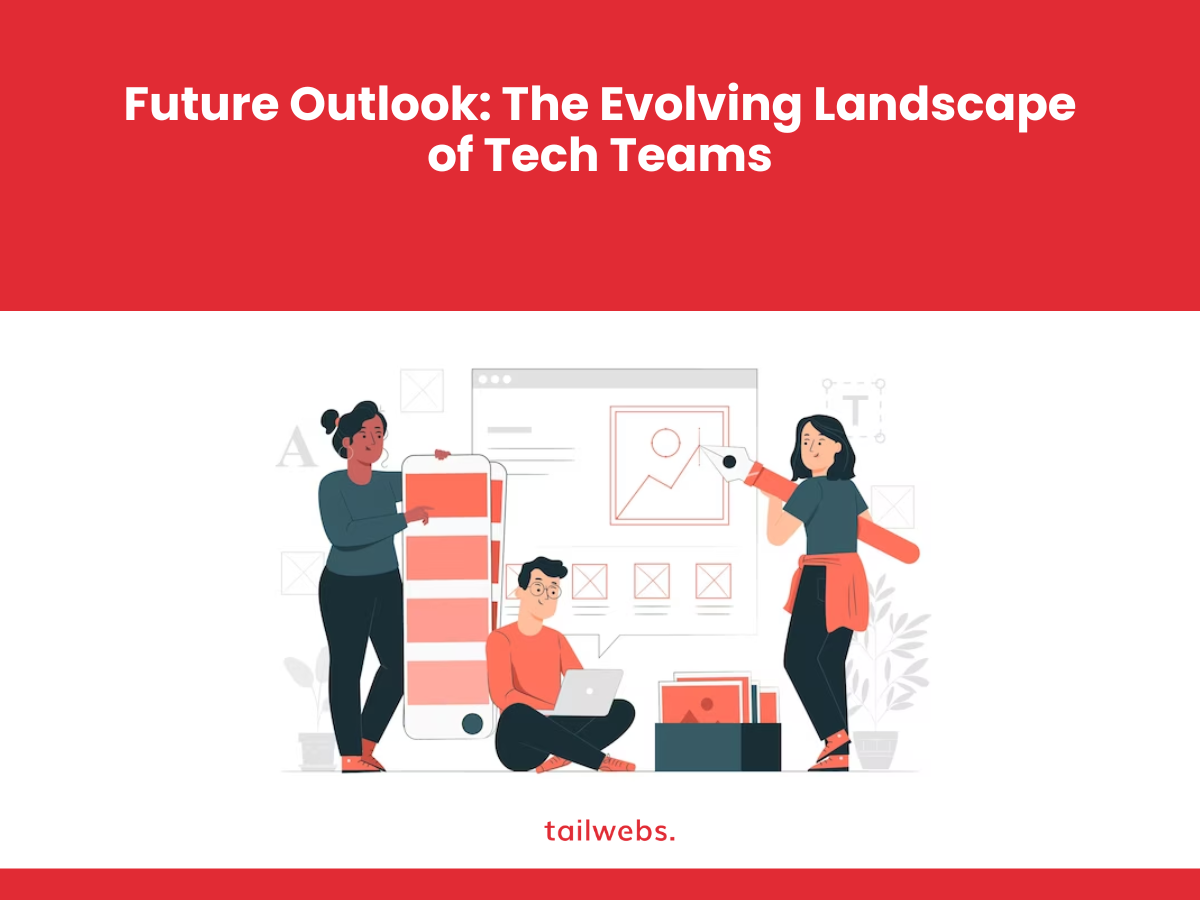As the technological landscape continues its rapid evolution, the future of tech teams is poised for exciting transformations.
Here are some key trends to watch for Tech Teams:
1. Rise of AI and Automation:
AI and automation will continue to play an increasingly prominent role in tech teams, taking on repetitive tasks and freeing up human talent for more strategic initiatives. However, human-AI collaboration will be crucial to ensure ethical implementation and maximize the potential of these technologies.
2. Distributed and Remote Work:
Remote work, accelerated by the pandemic, is likely to become the norm in many tech teams. This will require a focus on fostering strong virtual collaboration practices and building a culture of trust and transparency.
3. Emphasis on Soft Skills:
While technical expertise remains essential, soft skills like communication, collaboration, emotional intelligence, and adaptability will become increasingly crucial for success in tech teams. The ability to navigate complex situations, communicate effectively, and build strong relationships will be highly valued.
4. Continuous Learning and Upskilling:
With technology changing at an ever-increasing pace, continuous learning and upskilling will be non-negotiable for tech teams to stay ahead of the curve. Organizations will need to invest in training programs, encourage knowledge sharing, and foster a culture of lifelong learning.
5. Prioritization of Diversity and Inclusion:
Building diverse and inclusive tech teams will be critical to tap into a wider range of perspectives and talent pools. This will require focusing on unconscious bias training, creating welcoming work environments, and actively seeking out talent from underrepresented groups.
6. Emergence of New Roles:
As technology evolves, so will the job landscape. We can expect to see new roles emerge in areas like AI ethics, cybersecurity, data science, and user experience design. Tech teams will need to be flexible and adaptable to accommodate these changing needs.
By embracing these trends and proactively preparing for the future, organizations can build high-performing tech teams that thrive in the ever-changing digital landscape. Remember, the future of tech teams is about empowering human talent, utilizing technology ethically, and fostering a culture of continuous learning and innovation.
Remote-First Development: Navigating the Landscape of Distributed Teams
The traditional office landscape is shifting. Gone are the days of cubicles and water cooler chats; the future of work is remote-first. This paradigm change presents exciting opportunities for developers, offering flexibility, autonomy, and access to a global talent pool. However, effectively managing distributed teams requires a new set of skills and strategies.

Why Remote-First Development:
Talent Acquisition:
Access a wider pool of skilled developers, without geographical limitations.
Increased Productivity:
Studies show remote workers can be more productive than their office counterparts.
Improved Employee Satisfaction:
Greater flexibility and autonomy contribute to higher employee satisfaction and reduced turnover.
Cost Savings:
Eliminate overhead expenses associated with traditional office spaces.
The Challenges of Remote Development:
Communication and Collaboration:
Maintaining clear communication and effective collaboration across time zones and locations can be challenging.
Building Team Culture:
Fostering a sense of belonging and community in a remote team requires deliberate effort.
Motivation and Engagement:
Managing remote employees’ motivation and engagement can be challenging without the constant in-person interaction.
Security and Data Protection:
Securely storing and managing sensitive data becomes more complex with geographically dispersed teams.
Building Strong Foundations for Success:
Embrace Transparency and Open Communication:
Regularly share information, updates, and decisions with your team. Encourage open communication and questions.
Invest in the Right Tools:
Utilize collaboration platforms, video conferencing software, and project management tools to facilitate seamless communication and workflow.
Establish Clear Expectations and Goals:
Set clear expectations for individual and team goals, responsibilities, and communication protocols.
Prioritize Regular Meetings:
Schedule regular team meetings, video calls, and one-on-one check-ins to maintain connection and collaboration.
Promote Asynchronous Communication:
Encourage the use of asynchronous communication tools like emails, chat platforms, and documentation to accommodate various time zones and work styles.
Building Team Spirit and Culture:
Virtual Team-Building Activities:
Organize virtual social events, games, or even online retreats to build camaraderie and foster a sense of belonging.
Recognize and Celebrate Achievements:
Publicly acknowledge individual and team successes to boost morale and motivation.
Encourage Knowledge Sharing:
Facilitate cross-team collaboration and knowledge sharing through dedicated channels and mentoring programs.
Invest in Employee Well-being:
Prioritize employee mental health and well-being by offering resources and promoting work-life balance.
Ensuring Security and Data Protection:
Implement Robust Security Measures:
Invest in reliable cybersecurity tools and employee training to protect sensitive data.
Establish Clear Data Access and Sharing Policies:
Define clear guidelines for data access, storage, and sharing within the team.
Regularly Review and Update Security Protocols:
Stay vigilant about emerging threats and adapt your security measures to mitigate risks.
Recommended Resources:
Atlassian: Distributed Teams: Strategies for Success
Harvard Business Review: Managing Remote Teams: A Practical Guide
Forbes: 10 Tips for Leading a Successful Remote Team
Books: “Remote: Office Not Required” by Jason Fried and David Heinemeier Hansson, “Do More With Less: 7 Days to Faster Development Cycles” by Tim Ferris, “The Culture Code” by Daniel Coyle

The Road Ahead:
Remote-first development is not just a trend; it’s the future of work for many organizations. By embracing the challenges and implementing these strategies, businesses can unlock the immense potential of distributed teams and build thriving, productive, and collaborative environments where developers can excel from anywhere in the world.
Remember, successfully managing remote-first development requires a cultural shift. Cultivate a culture of trust, transparency, and flexibility. Empower your team members, encourage open communication, and celebrate their successes. By prioritizing both individual and team well-being, you can build a remote-first development environment that drives innovation, fosters collaboration, and empowers your team to achieve new heights.
Join the Movement: Become a Remote-First Champion
The success of remote-first development hinges on individual commitment and leadership. Here’s how you can contribute:
Embrace the change:
Challenge traditional mindsets and embrace the opportunities presented by a remote-first approach.
Develop essential skills:
Learn new skills and strategies for communication, collaboration, and leadership in a remote environment.
Advocate for your team:
Voice the needs and challenges of remote workers and champion solutions that foster their success.
Set the example:
Lead by example, demonstrating transparency, open communication, and effective collaboration in your own work.
By working together, we can build a future where remote-first development thrives, fostering a global community of skilled developers who can collaborate and innovate without boundaries, pushing the limits of what’s possible and shaping the future of technology.
Remember, successfully navigating the remote-first world requires continuous learning and adaptation. As technology evolves and best practices emerge, it’s crucial to stay ahead of the curve and refine your approach. Here are some additional factors to consider:
Embrace asynchronous communication:
While real-time interaction is valuable, asynchronous communication can be key to accommodating diverse schedules and work styles. Utilize collaborative tools like document-sharing platforms, wikis, and project management boards to allow team members to contribute on their own time.
Invest in mental health and well-being:
Working remotely can blur the lines between work and personal life. Encourage healthy work-life balance by offering access to resources like mental health programs, flexible schedules, and paid time off. Foster a culture that discourages always-on work and emphasizes personal well-being.
Promote knowledge sharing and mentorship:
Cross-team collaboration and knowledge sharing are critical for innovation and skill development. Create opportunities for virtual knowledge sharing sessions, mentorship programs, and cross-disciplinary projects. This fosters a learning environment and breaks down silos.
Leverage emerging technologies:
Embrace new technologies that can enhance remote team collaboration and productivity. Explore virtual reality (VR) and augmented reality (AR) tools for project collaboration, gamification platforms to boost engagement, and artificial intelligence (AI) assistants to automate routine tasks.
Build a culture of feedback and continuous improvement:
Regularly solicit feedback from your team on their experiences, pain points, and suggestions. Foster a culture of open feedback and embrace opportunities for continuous improvement. This ensures your remote-first approach adapts to your team’s evolving needs.
Remember, building a thriving remote-first development team is not a one-time effort. It’s an ongoing process that requires dedication, flexibility, and a continuous commitment to learning and adaptation. By prioritizing communication, collaboration, well-being, and growth, you can create a remote-first environment where your team members feel empowered, engaged, and ready to tackle any challenge, regardless of their location.
The Future of Remote-First Development: A Global Tapestry of Innovation
The future of remote-first development is not just about working from anywhere, it’s about building a global tapestry of innovation, where talent transcends borders and ideas flow freely across continents. By embracing this paradigm shift, we can empower diverse teams of developers to collaborate, connect, and push the boundaries of what’s possible.
Imagine a world where:
Developers in Berlin collaborate in real-time with their counterparts in Bangalore on a groundbreaking AI project.
A design team in San Francisco seamlessly iterates on prototypes with developers in London, thanks to robust collaboration tools.
Global hackathons unite developers from across the globe, fostering cross-cultural learning and generating transformative ideas.
This is not just a futuristic vision; it’s the future we are building together, brick by virtual brick, in the exciting landscape of remote-first development. As we navigate this journey, let’s remember that our collective commitment to collaboration, innovation, and inclusivity will shape the future of technology and create a world where remote-first development becomes a catalyst for global progress and shared success.
To find out the top tech teams and agency, You can check platforms like: software outsourcing





